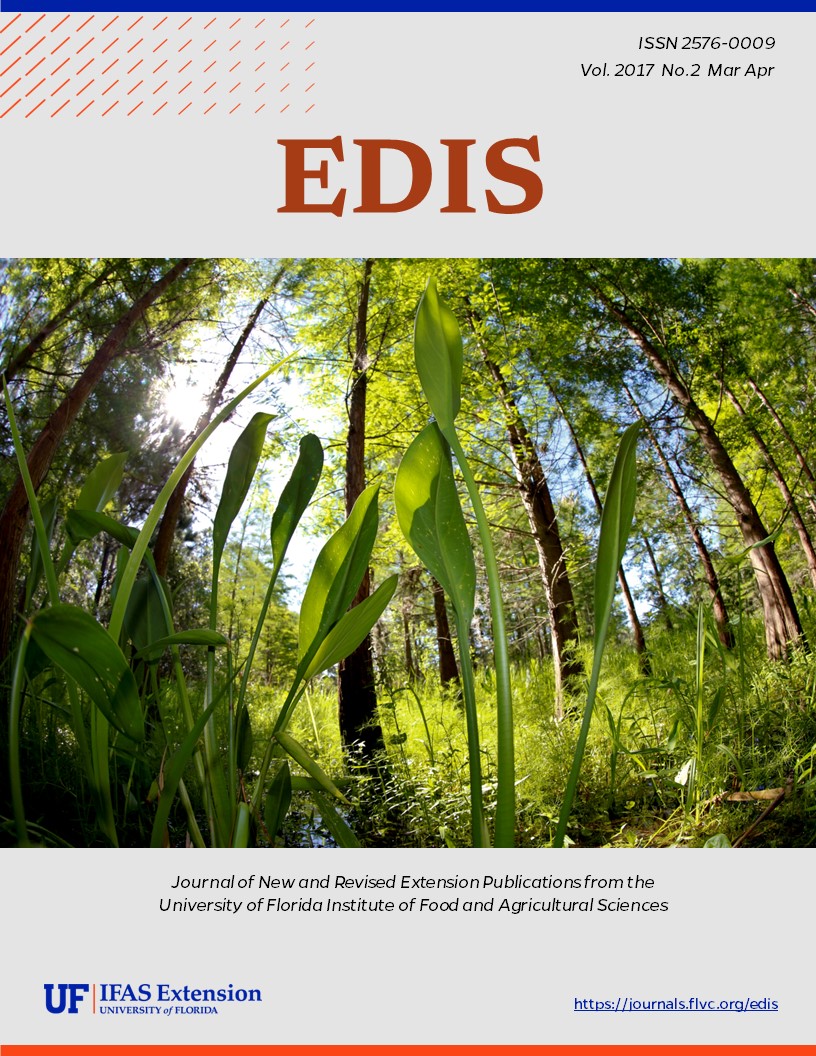Abstract
This EDIS publication is an alternate version of a page published first on the Featured Creatures website. The Featured Creatures collection provides in-depth profiles of insects, nematodes, arachnids and other organisms relevant to Florida. These profiles are intended for the use of interested laypersons with some knowledge of biology as well as academic audiences. This 5-page fact sheet that discusses the winter ant was written by Jason L. Williams and Andrea Lucky, and published by the UF Entomology and Nematology Department, February 2017.
References
Anonymous. (2017). Prenolepis imparis. AntWiki. (5 January 2017)
California Academy of Sciences. (2017). Specimen: CASENT0005430 Prenolepis ca01. AntWeb. (5 January 2017)
Dennis CA. 1941. Some notes on the nest of the ant, Prenolepis imparis Say. Annals of the Entomological Society of America 34: 83-86. https://doi.org/10.1093/aesa/34.1.82
Deyrup M. 2017. Ants of Florida: Identification and Natural History. Boca Raton: Crc Press. https://doi.org/10.1201/9781315368023
Fellers JH. 1989. Daily and seasonal activity in woodland ants. Oecologia 78: 69-76. https://doi.org/10.1007/BF00377199
Gaddy LL. 1986. Twelve new ant-dispersed species from the southern Appalachians. Bulletin of the Torrey Botanical Club 113: 247-251. https://doi.org/10.2307/2996363
Lapolla JS, Dlussky GM. 2010. Review of fossil Prenolepis genus-group species (Hymenoptera: Formicidae). Proceedings of the Entomological Society of Washington 112: 258-273. https://doi.org/10.4289/0013-8797-112.2.258
Lynch JF, Balinsky EC, Vail SG. 1980. Foraging patterns in three sympatric forest ant species, Prenolepis imparis, Paratrechina melanderi and Aphaenogaster rudis (Hymenoptera: Formicidae). Ecological Entomology 5: 353-371. https://doi.org/10.1111/j.1365-2311.1980.tb01160.x
Say T. 1836. Descriptions of new species of North American Hymenoptera, and observations on some already described. Boston Journal of Natural History 1: 209-305.
Sorrells TR, Kuritzky LY, Kauhanen PG, Fitzgerald K, Sturgis SJ, Chen J, Dijamco CA, Basurto KN, Gordon DM. 2011. Chemical defense by the native winter ant (Prenolepis imparis) against the invasive Argentine ant (Linepithema humile). PLoS ONE 6: e18717. https://doi.org/10.1371/journal.pone.0018717
Talbot M. 1943. Population studies of the ant Prenolepis imparis Say. Ecology 24: 31-34. https://doi.org/10.2307/1929858
Tschinkel WR. 1987. Seasonal life history and nest architecture of a winter-active ant, Prenolepis imparis. Insectes Sociaux 34: 143-164. https://doi.org/10.1007/BF02224081
Tschinkel WR. 2011. Subterranean ant nests: trace fossils past and future? Palaeogeography, Palaeoclimatology, Palaeoecology 192: 321-333. https://doi.org/10.1016/S0031-0182(02)00690-9
Wheeler WM. 1930. The ant Say. Annals of the Entomological Society of America 23: 1-126. https://doi.org/10.1093/aesa/23.1.126
Wheeler GC, Wheeler JN. 1953. The ant larvae of the subfamily Formicinae. Annals of the Entomological Society of America 46: 126-171. https://doi.org/10.1093/aesa/46.1.126
Williams JL, LaPolla JS. 2016. Taxonomic revision and phylogeny of the ant genus Prenolepis (Hymenoptera: Formicidae). Zootaxa 4200: 201-258. https://doi.org/10.11646/zootaxa.4200.2.1

